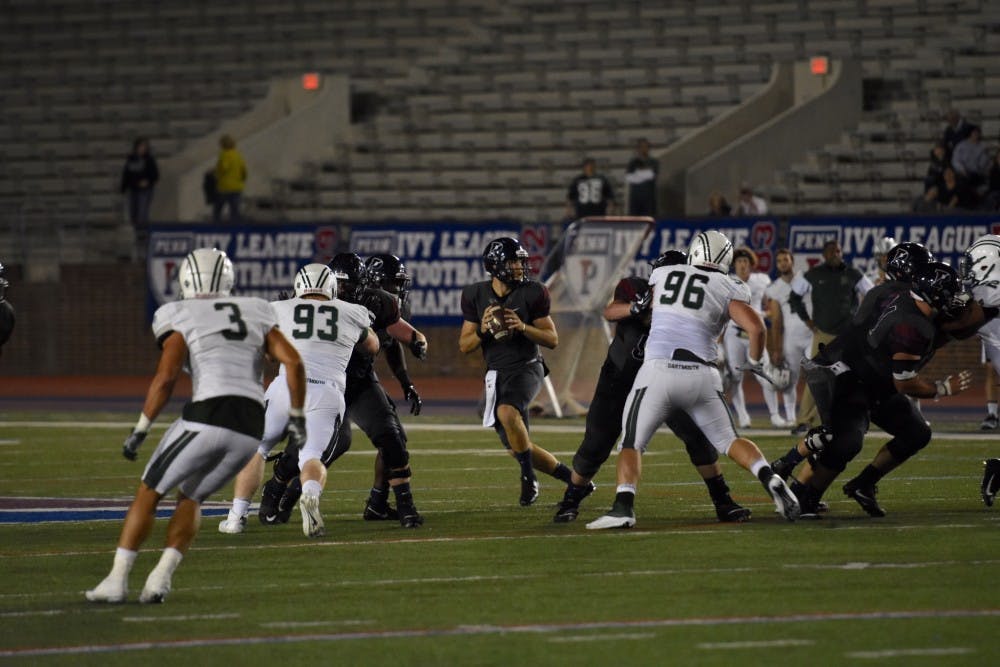
If last weekend’s game at Lehigh was a good old fashioned shootout, then this week’s Penn football game is a near-stalemate. The Quakers trail Dartmouth at halftime of their Ivy League opener, 10-7.
The first quarter of the nationally-televised game ended without a single score — or even a threat of one. The majority of the 15 minutes was played around mid-field, where both team’s defenses stood strong. The Big Green put up 95 yards of offense, however, while the Quakers managed just 26.
Dartmouth got things going in the second quarter with a clinical touchdown drive, highlighted by options, jet sweeps and all sorts of tricky offense.
It took Penn the rest of the quarter to respond, but the hosts managed to tie it up before halftime with a great drive of their own. Senior captain Justin Watson took matters into his own hands with a 21-yard rush to start the drive and a 6-yard catch to end it.
Dartmouth got the ball back with a minute left in the half, and managed to move the ball up the field quickly enough to earn a 43-yard field goal attempt. Penn coach Ray Priore attempted to ice the kicker with three consecutive timeouts preceding the kick — to no avail, though, as the field goal just barely made it far enough to nab three points to round out the half.
Even though the half ended with Dartmouth up by just three, the Big Green looked by far the better team on the stat sheet.
The Quakers produced 105 total yards in the half — 58 of which came from sophomore running back Karekin Brooks — while the Ivy League’s northernmost team put up 238, split almost evenly between air and ground.
It's a vastly different game from last week's contest at Lehigh, which Penn led at halftime by an eye-popping score of 35-28. Though defense has reigned supreme so far this week, everything could change in the second half.
Check back after the game for a full recap.
The Daily Pennsylvanian is an independent, student-run newspaper. Please consider making a donation to support the coverage that shapes the University. Your generosity ensures a future of strong journalism at Penn.
Donate



